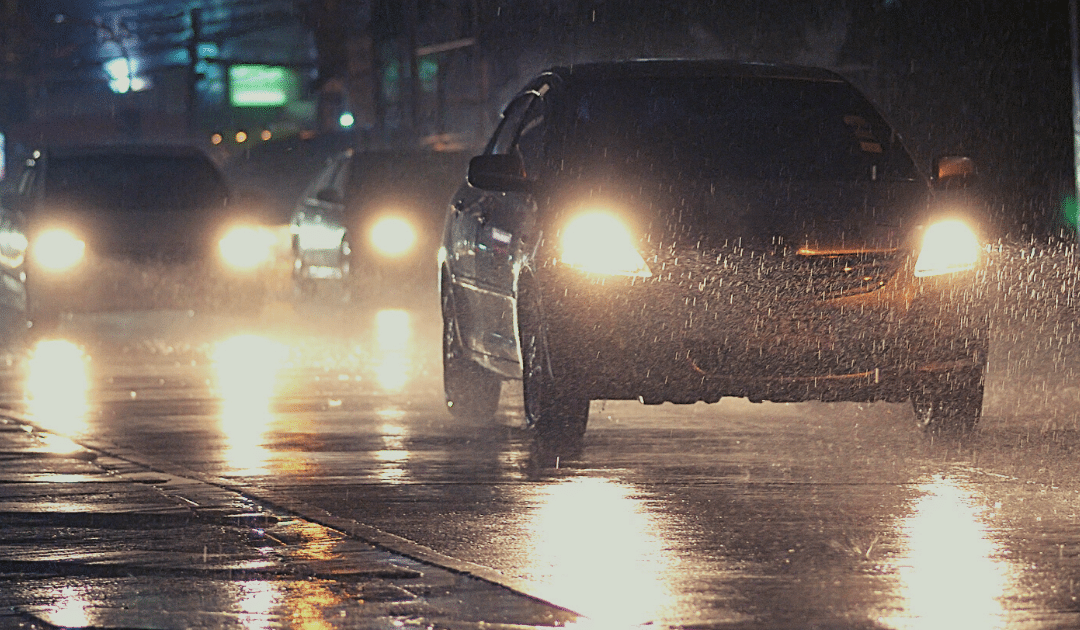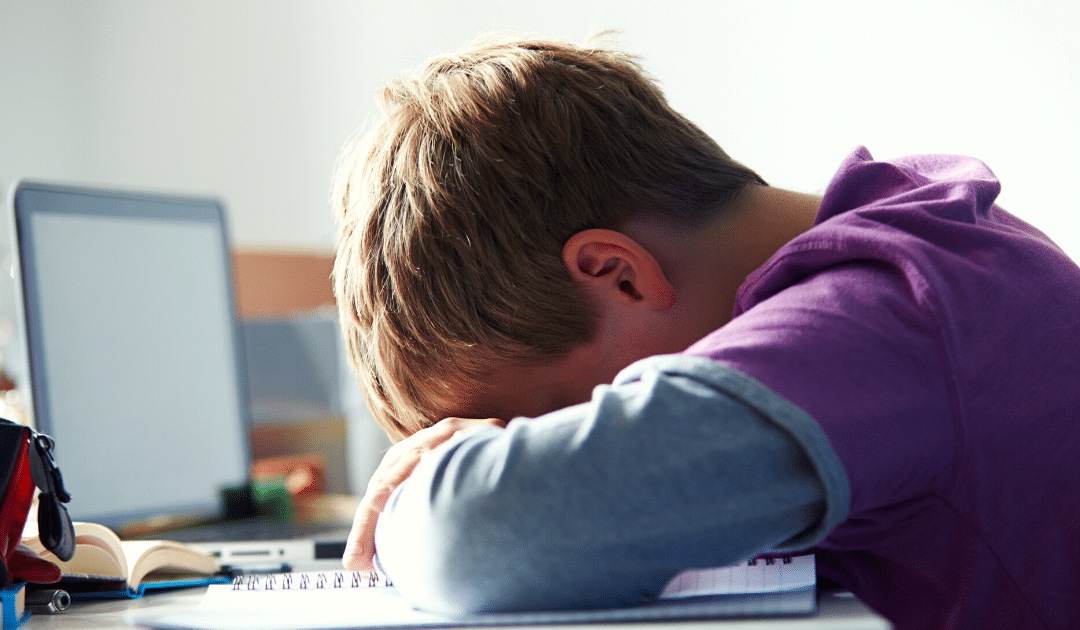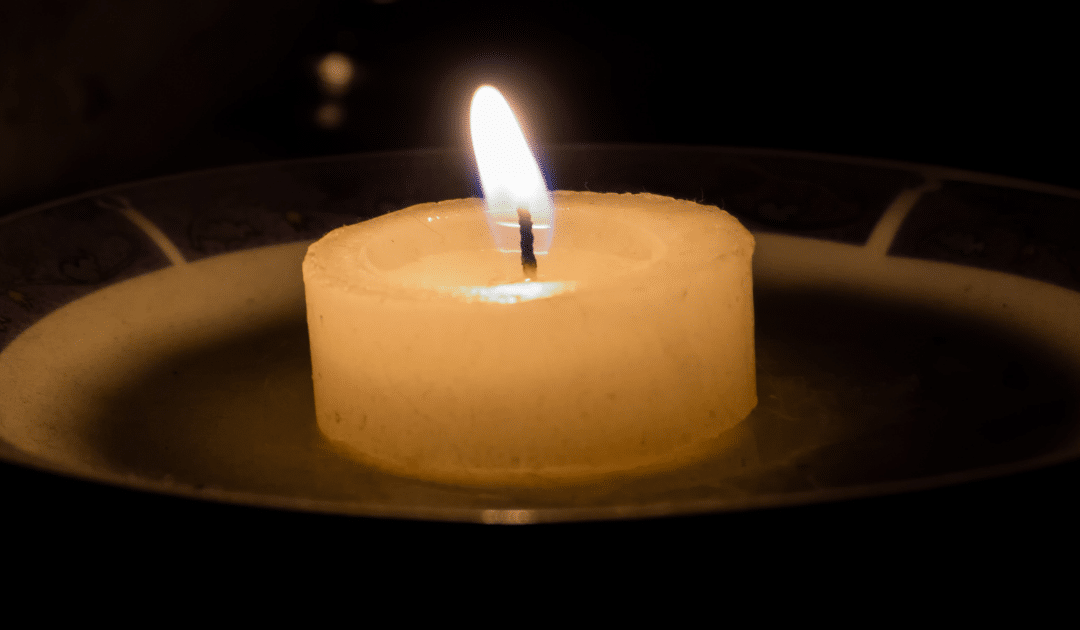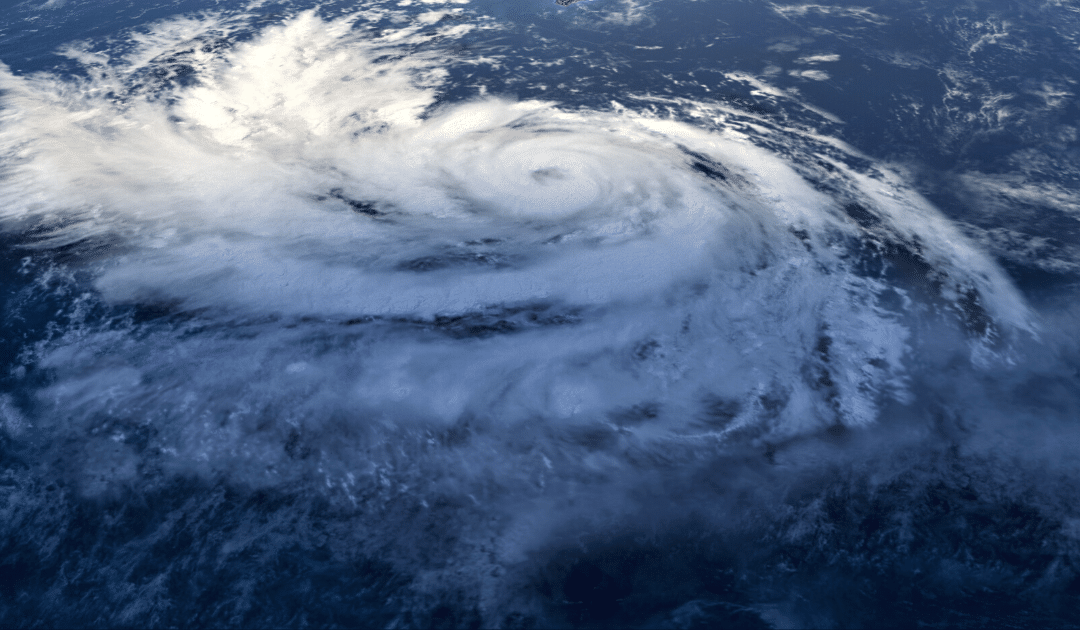
by California Casualty | Auto Insurance Info, Safety |
Teen drivers are the most accident-prone of all drivers because of one major factor: inexperience. In fact, their first 6-12 months of solo driving is the most dangerous stretch of their lifetime as a licensed driver.
Because they’ve logged far fewer hours compared to other drivers, they are less able to predict – and properly respond to – hazards, sudden changes in traffic and erratic behaviors by other drivers. They also typically haven’t made a habit of defensive driving techniques, leaving them vulnerable to making wrong decisions in the moment.
If you have a young driver (or soon-to-be licensed driver) in the house, as a parent, your years of driving experience are an invaluable asset. Here are some ways you can leverage that knowledge and expertise to help boost your teen’s safe driving know-how.
The Learning Permit Phase: A Golden Opportunity
Many new teen drivers complete their learner’s permit training lacking important real-world driving skills. You can help your teen shore up that deficit by serving as co-pilot in a range of driving scenarios and situations during the permit phase. By exposing them to – and coaching them through – diverse experiences behind the wheel, you will help them become a confident, safe and independent driver.
Although you may feel more secure behind the wheel, here are some driving scenarios that teens need to experience.
1. Bad Weather
There’s a big difference between answering driver test questions about how to handle bad weather and how to actually do it in the moment. When possible, have your teen drive you during the following weather events.
- Snow
- Wind
- Heavy rain
- Sleet
2. Different Roads
Different roadways (and intersections) call for different driving skills and techniques. Ditto for traffic situations. Expose them to as many as you can, including:
- One-way roads
- Two-lane roads with high-speed limits
- Peak commute traffic
- Multi-lane highways and interstates
- Congested roads in urban centers
- Residential streets
3. Day, Night, and Everything in Between
Bright light at dawn and sunset, as well as low light at dusk, affects drivers’ visibility and also influence traffic patterns and behaviors. Practice driving with your teen at different times of day and night. Coach them on the adjustments they need to make in terms of following distance and defensive driving, as well as personal adjustments with visors, sunglasses, headlights, and more.
4. Switch up passengers
For a new driver, devoting their full attention to driving and the road is incredibly important. Knowing that your teen won’t be driving alone forever, why not invite another family member or friend along so your teen can start strengthening their “focus muscles”? Distractions are a major cause of accidents among teens, so the sooner they can begin successfully managing distractions while driving, the better.
5. Different cars
If your family has multiple cars, have your teen practice in each of them. Sedans drive much differently from SUVs, and stick shifts from automatics, etc. – all are good for them gaining familiarity with a variety of vehicles.
Teen Drivers’ Most Common Errors
In addition to exposing your young driver to a range of on-the-road experiences, be sure to also help them cultivate good driving habits. Here are the top errors that inexperienced drivers make – keep an eye out for them and coach your teen along the way.
- Lack of scanning – Inexperienced drivers typically detect hazards later than more experienced drivers and may be unsure how to react. Left turns are especially dangerous for them.
- Distractions – No matter whether they come from inside or outside the vehicle, distractions are a common reason for teen crashes.
- Speeding – This includes driving too fast for road conditions or weather as well as inadequate braking. This error commonly ends in rear-end events.
- Tailgating – Inexperienced teens haven’t yet gained a feel for safe cushion distances and can easily follow other vehicles too closely.
Teens need extra time and experience to master good driving skills. By accompanying them in a variety of driving settings and conditions – as well as lending your years of expertise – you’ll help them develop critical skills for more safely navigating our roadways. For more teen driver safety tips, click here.
This article is furnished by California Casualty. We specialize in providing auto and home insurance to educators, law enforcement officers, firefighters, and nurses. Get a quote at 1.866.704.8614 or www.calcas.com.

by California Casualty | Firefighters, Safety |
There are many more combustible materials in today’s homes than in years past, which means a spark or small fire can engulf a house in less than five minutes.
Smoke alarms are a critical first line of defense against catastrophic loss. To keep your family and home safe, follow these tips on installing alarms correctly, testing them, and ensuring that they’re properly maintained and cleaned.
Step 1: Installation
First, you should know that there are two types of smoke alarms: ionization and photoelectric. The first is more responsive to flaming fires, the second to smoldering fires. For best protection, use both types or a hybrid of the two. When it comes time to install them, remember to:
-
- Install alarms inside each bedroom as well as outside sleeping areas and on every level of your home, including the basement.
- Choose alarms that display the label of a recognized testing laboratory.
- Install wall-mounted alarms 4 to 12 inches from the ceiling, and ceiling-mounted models at least 4 inches from the closest wall.
- To avoid false alarms, place the units more than 10 feet from cooking appliances and 3 feet from bathrooms (shower steam can trigger them).
- Smoke alarms in the basement should be positioned on the ceiling at the bottom of the stairs leading to the next floor.
- For pitched ceilings, place alarm within 3 feet of the peak but not within the apex.
- Never paint smoke alarms or adhere stickers or decorations, as this can disable them.
- Don’t install alarms near doors, ducts, or windows where drafts might decrease their sensitivity.
- If possible, interconnect your smoke alarms using hard-wiring or wireless technology. This extra safety measure enables all the alarms to sound at once when any single one is triggered. Note that they must be from the same manufacturer.
Step 2: Testing
Be sure to keep the manufacturer’s instructions so you can properly test them and use for reference.
-
- While using ear protection, test alarms at least once a month using the “test” button. This ensures that your alarms have reliable power.
- Never test your alarm with real smoke or exhaust.
- Make sure you know what kind of batteries your smoke alarms have. Some units have non-replaceable 10-year batteries; others have batteries that need to be replaced every 6-12 months. For the latter, always have fresh replacement batteries on hand.
- Always replace batteries following the manufacturer’s instructions. If it specifies a particular battery, use that exact one or the alarm might not work properly.
Step 3: Maintenance & Cleaning
Smoke alarm safety depends on regular maintenance and cleaning. Do the following to ensure yours stay in proper working order.
-
- Maintain a monthly testing schedule and log your maintenance activities, along with any notes.
- If the alarm chirps, that means the battery is low and you should replace it right away.
- Clean alarms by gently vacuuming the outside of the unit with a soft brush attachment. You can also use a can of clean compressed air (sold at office supply stores).
- Never use water, solvents or cleaners on your alarm.
For more tips on home fire safety, be sure to read our Home Fire Safety Tips from Firefighters and check out this handy infographic.
Finally, make sure your family has a fire escape plan in place and that everyone understands and can follow it in an emergency. Use the National Fire Protection Association’s easy-to-use template here.
This article is furnished by California Casualty. We specialize in providing auto and home insurance to educators, law enforcement officers, firefighters, and nurses. Get a quote at 1.866.704.8614 or www.calcas.com.

by California Casualty | Safety |
Bullies have always been around. But whereas bullying used to happen mostly on school campuses and in classrooms, it’s now followed students to their remote and virtual lives.
As children and teens go to classes online, and their main line of communication is via social media, it’s important to know that, as a parent, there are steps you can take to educate yourself and your child and better protect them.
What Is It?
Cyberbullying is the use of technology to intentionally humiliate, intimidate, embarrass, threaten, or harass another person. It can include online threats, aggressive messages, or posts of photos or videos meant to humiliate. Cyberbullies often share personal or private information about their targets (often called doxing), or post false, harmful, or negative information, all designed to cause embarrassment or intimidation. Some cyberbullying crosses the line into unlawful behavior.
Cyberspace: Where Anything Goes
The expansion of social interaction into the virtual space means that cyberbullying is:
- Persistent – The 24/7 nature of our virtual world means bullying can happen anytime and anywhere.
- Permanent – Once something is shared on the internet, it can be hard to delete. And even if it is removed, it can already have caused immense damage while live.
- Hard to detect – The online nature of cyberbullying makes it much harder for adults to detect than when it happens in person.
- Anonymous – Victims of cyberbullies might not even know who is targeting them, adding anxiety, mistrust, and confusion to an already hurtful interchange. And as anyone familiar with trolls knows, anonymity often breeds an extra layer of viciousness.
- Can spread to a large audience – Attacks can reach a very large audience in a short period of time, making it difficult to contain the spread.
Where Does It Occur?
Cyberbullying can happen wherever there is online social interaction. The most common places are:
- Social media such as Facebook, Tik Tok, Twitter, Snapchat, and Instagram
- Direct messaging, instant messaging, and online chatting on various platforms
- Text messaging on mobile devices, online apps, or tablets
- Email
- Online gaming communities
- Online chat rooms, message boards, and other forums
What You Can Do
As a parent, you have tools at your disposal to help protect your child.
- Talk about it. Have the cyberbullying conversation early – communication is key in detecting and addressing it. Kids may be reluctant to talk but making sure they know you’re available and ready to help may allay their fears. Make sure to help them set expectations, know what to look for, and be alert to red flags.
- Set rules. Just as you protect them in the physical world, make sure you’re establishing guidelines and boundaries in the virtual world. Stress the importance of privacy protection, password security, and discernment of who to friend or not. Set hours that technology can be used and when it should be turned off.
- Set parental controls – Set up parental access for your kids’ cell phones, social networking sites, text history, etc. As your child gets older, re-evaluate the rules and restrictions. Keep communication open and provide guidance in helping them become a critical thinker.
- Stay involved – Check in regularly. Even if your child is not being bullied themselves, they may well be a witness to it. It’s important to stay engaged, not just for teachable moments but for the possible need to bring bullying behavior to teachers’ or school administrators’ attention.
- Documentation – If you suspect your child is being bullied, document the evidence. Record details, including: saving URLs where bullying occurred; printing emails, posts, or webpages; taking screenshots of bullying, and saving texts or messages.
Victim, Witness, or Bully?
Cyberbullying affects not only the bully and their victim, but also witnesses. Here’s some final advice to help your kid no matter where they are in the dynamic.
- If your child is being bullied – In addition to the tips above, remember to offer a safe and supportive space for them to share their feelings and experience. Let them know that it is not their fault, they are not alone, and bullying is never okay. Work with their teacher and school administrators and ask about the school’s bullying prevention policy and protocol.
- If your child has witnessed bullying – Let them know they can make a difference by: not engaging in bullying behavior (no matter how “minor” it seems), reporting it, and reaching out to and supporting the victims. Remind them they can trust parents, teachers, school counselors, and other adults, and should reach out to them right away.
- If your child is being a bully – First, remember that bullying is a behavior, and behaviors can be changed. You’ll need to talk with them, ask about their feelings, and explore reasons for their behavior. You may wish to involve a school counselor or a children’s therapist. Discuss expectations and consequences, and practice positive feedback and patience as your child works on their behavior.
While the virtual world offers kids new, meaningful ways to interact and opportunities to learn, share, and grow, it also, unfortunately, provides fertile ground for bullying. By keeping lines of communication open with your child and setting guidelines and expectations, you can help protect them. If you’re a teacher, check out these tips for preventing bullying in the classroom – many of which can be applied virtually.
This article is furnished by California Casualty, providing auto and home insurance to educators, law enforcement officers, firefighters, and nurses. Get a quote at 1.866.704.8614 or www.calcas.com.

by California Casualty | Auto Insurance Info, Safety |
Booster seats were designed for that critical time when a child has outgrown their car seat but isn’t yet tall or heavy enough to be safe in a seat belt alone.
Here’s a primer on the different booster types, tips for buying and installing one, and help on determining when it’s safe to transition your child out of the booster for good.
Booster Seat Types
There are 4 types of boosters, differentiated by your child’s needs and also your preferred functionality.
Backless Booster Seat – Boosts the child’s height so that the seat belt fits properly. Best for cars that have headrests.
Booster Seat with High Back – Like the first seat type, this raises the child’s height so as to ensure a proper seat belt fit, but it provides neck and head support.
Combination Seat – Accommodates a child’s growth by transitioning from a forward-facing seat with a harness into a booster.
All-in-One Seat – Like the combination seat, this one transitions as well, but goes from rear-facing seat, to forward-facing, and finally to a booster.
Whatever style you choose, make sure the seat has a guide for your car’s shoulder belt, so that it lies across their torso correctly. Also, make sure the guide allows the belt to retract easily. Some seats have clips, wings, and even adjustable bases, all of which further tailor to your child’s height/weight and the specifics of your vehicle.
Learn more about seat types at the National Highway Traffic Safety Administration’s (NHTSA) page.
Tips on Buying and Installing
Buying a booster seat
- Always buy new, as used seats may not fit your child correctly or could even be unsafe.
- If your child weighs less than 40 lbs, a combination seat may be your best bet.
- Avoid seats with a reclining feature as they can put your child at an increased risk of injury in an accident.
Installing the seat
- Like car seats, boosters should only be installed in the back seat.
- The safest spot is in the center of the rear seat — which best protects against side-impact crashes — but only if your vehicle has a lap and shoulder belt in the center. If there’s only a lap belt, put the seat on the passenger side so you can better see your child from the driver’s seat.
- If using a combination seat, use the anchoring system. This is called the LATCH system, short for Lower Anchors and Tethers for Children.
- Use the seat’s belt-positioning clips if it came with them. They ensure that the belt crosses your child’s chest correctly.
- Check out these videos by the NHTSA for instructions on properly installing high-back boosters, backless boosters, combination boosters, and all-in-one boosters.
A Checklist: When Can They Graduate Out of a Booster?
According to the NHTSA, more than 25% of kids aged 4 to 7 are transitioned out of a booster seat too soon. The organization recommends that children continue using a booster until they’re at least 4 feet 9 inches tall AND 8 to 12 years old. They should also have outgrown the seat manufacturer’s weight and height recommendations.
If you can answer “yes” to all of the below when your child is sitting on the vehicle seat, then they can move from a booster to seat belts only.
- Is their back flat against the seat back?
- Do their knees comfortably bend at the seat’s edge?
- Does the shoulder belt lie between their neck and shoulder?
- Does the lap belt lie against their hip bones/tops of thighs?
- Can they remain comfortable for the whole trip? (i.e. without fidgeting, sliding, or pushing the belt out of position)
We know that boosters can be a hassle and that you’re probably fielding the “Do I still have to use the booster seat?” question a few times a week — but hang in there! Graduating your child when they’re actually ready to leave the booster is much safer for your precious cargo — and may be closer than you think.
Booster seats? Check. Need tips on car seats? Check out our blog post here.
This article is furnished by California Casualty, providing auto and home insurance to educators, law enforcement officers, firefighters, and nurses. Get a quote at 1.866.704.8614 or www.calcas.com.

by California Casualty | Safety |
Power outages can last anywhere from a few hours to days or even weeks. In the latter case, an outage can affect entire communities, disrupting communications, transportation, and emergency response or health care services. It can also close businesses, banks, gas stations, grocery stores, and other services.
Understanding why and how they happen can help you better prepare. Next, having a plan and taking precautions ahead of time will help you and your family ride out the outage with less stress and a greater sense of control.
When and Why They Happen
Knowing how outages happen can sometimes help you predict when they’re most likely to occur – for instance, during storms or heatwaves. Other times, they’re random and unpredictable.
-
- Weather – Storms and weather events such as high winds, ice, and snow are the most common cause of outages, oftentimes due to trees and limbs taking down power lines. Rain and flooding can also damage above-ground or underground electrical equipment. And earthquakes of all sizes can damage electrical grids.
- Animals – Far and away, squirrels cause the most damage to power lines, but snakes and other critters can prompt an outage by nesting in or climbing on transformers, boxes and other equipment.
- Human Error – Car accidents and digging mishaps — when underground lines are hit — are a common cause. Additionally, electrical overuse during heatwaves and other times of unusually high demand can overburden cables, transformers and other links in the system.
Get Ahead of an Outage with Smart Planning
Planning and preparation are key to making a power outage manageable. There’s no better time than today to get started on the steps below.
Communications
-
- Download the NOAA radio app, your local weather alert app, and any other emergency app of your choice.
- Talk to your medical provider If anyone in your household requires electric medical devices or refrigerated medication. Get guidance on what to do if you lose power.
- Update your phone number and contact information with your electric provider.
Plans and kits
-
- Assemble or update your emergency kit – one for your family and another for your pet(s). Be sure to check and replace all batteries and have fresh back-ups. Also make sure you have COVID-19 supplies such as hand sanitizer, wipes, masks, and gloves.
- Make sure your household evacuation plan is current, and all household members and pets are accounted for.
- Know your local community’s risk and response plans.
- Have a plan, budget, and some extra cash on hand in case power restoration is delayed.
In Your Home
-
- Install surge protectors to help safeguard expensive appliances, computers and entertainment systems.
- Install carbon monoxide monitors with battery backup on every level of your home.
- Have at least a half tank of gas in your car at all times.
- Purchase household and food supplies ahead of time and stash some extras in case of an extended outage.
A Go-To Plan for When the Grid Goes Dark
Ideally, you and your family will have been able to take the above steps before the lights go out. If so, you’ll be ready to put the following strategies into place in order to remain as safe and comfortable as possible during the outage.
Communications
-
- Tune into the NOAA radio on a battery-powered or hand-crank radio, and/or the local radio station for news and weather updates.
- Report the outage immediately to your local power provider (have their info printed out and handy).
In Your Home
-
- Turn off and unplug all appliances, including the air conditioner, water heater, furnace, and water pump, as well as any sensitive electronics. Leave one light on to know when the power’s been restored – this helps prevent a circuit overload when everything comes back online.
- Keep refrigerator and freezer doors closed. Frozen food will stay frozen for 24-48 hours, depending on how full the freezer is. For refrigerated items, after about 4 hours, move perishable items into a cooler with ice (they should remain at 40 degrees Fahrenheit or colder to be safe).
- If using portable stoves or lanterns, only use them in sufficiently ventilated areas.
- Use flashlights instead of candles.
Outside
-
- Report any downed power lines to your electric company. Keep yourself, family, and pets away from downed lines, flooded areas, and debris.
- Avoid driving if you can. Traffic lights will be out and roads will be chaotic and unsafe.
- If you’re operating a generator, follow safety protocols. Never operate it in your home, garage, or other enclosed spaces.
- Check on your neighbors. The elderly and young children are especially susceptible to extreme temperatures.
The length of time it takes to restore power can vary according to the cause of the outage, the extent of damage, and the geographic area affected. Electric companies have detailed plans and procedures for restoration — starting with repairs to damaged power infrastructure, then re-powering critical community services, and finally restoring power to individuals and businesses in order of density.
By following the tips above, you can ride out the worst of it with less stress, knowing you prepared well.
This article is furnished by California Casualty, providing auto and home insurance to educators, law enforcement officers, firefighters, and nurses. Get a quote at 1.866.704.8614 or www.calcas.com.

by California Casualty | Safety |
Do you know the difference between a Category 2 and 3 hurricane? Do you know why a 5 is so bad? Are you clear on what safety precautions you’d need to take when expecting a Category 2 versus a 4?
Read on to better understand what the 5 hurricane categories really mean and what impacts each can bring to your home and community. Understanding the details will help you think through how to better prepare for hurricane season.
It’s All About the Wind Speed
The category numbers — 1 through 5 — come from the Saffir-Simpson Hurricane Wind Scale. Meteorologists rely on this scale to better understand a hurricane’s expected magnitude and predict the damage that will come when the storm makes landfall.
Ratings focus on sustained wind speed for the simple fact that with higher wind speeds come more damage — not only direct wind damage but also storm surges, rain-induced flooding, tornadoes, and more.

-
- Wind speeds: 74-95 mph
- Danger level: Very dangerous winds will produce some damage.
- Threat to homes, structures, and property: Winds can damage roof, shingles, siding, and gutters on well-built framed homes. Trees may topple and branches snap off. Protected glass windows generally remain intact.
- Community impacts: Potential damage to power lines and poles, leading to short-term power outages.
- Take note: Injuries to people and animals are limited and typically come from flying debris.

-
- Wind speeds: 96-110 mph
- Danger level: Extremely dangerous winds will cause extensive damage.
- Threat to homes, structures, and property: Framed homes susceptible to major roof and siding damage.
- Community impacts: Near-total power loss expected with outages lasting days to weeks. Significant structural damage to mobile homes, apartment buildings, and shopping centers. Flooding of low-lying areas is possible.
- Take note: Stock up on filtration systems for potable water.

-
- Wind speeds: 111-129 mph
- Danger level: Devastating damage will occur.
- Threat to homes, structures, and property: Major damage and/or removal of roof decking and gables possible on well-built framed homes. Mobile homes and poorly constructed homes are often destroyed. Many trees will be uprooted or snapped, blocking roadways.
- Community impacts: Water and electricity unavailable for days to weeks after the storm passes. Extensive inland flooding is possible.
- Take note: Make sure to be well-stocked with food and water if you choose not to evacuate.

-
- Wind speeds: 130-156 mph
- Danger level: Catastrophic damage will occur.
- Threat to homes, structures, and property: Well-built framed houses subject to severe damage, including loss of most of the roof and/or some exterior walls. Shopping centers and apartments also typically sustain severe structural damage.
- Community impacts: Power outages will last weeks to months. Neighborhoods in the strike zone will be uninhabitable for weeks or months.
- Take note: Sheltering in place is typically not recommended, but if you do, ensure you have a good supply of food, water, medications, etc.

-
- Wind speeds: 157 mph or higher
- Danger level: Catastrophic damage will occur.
- Threat to homes, structures, and property: Complete or almost-total destruction of framed homes, mobile homes, shopping centers, apartments, and commercial buildings.
- Community impacts: Nearly all trees will be snapped or uprooted, with many becoming airborne and acting as projectiles. Long-term water shortages should be expected, as well as a very long time to rebuild the community. The area will be uninhabitable for weeks or months.
- Take note: You should not be anywhere near this storm. Evacuate well ahead of time.
As with any natural disaster or extreme weather event, make sure you stay informed via local news and weather alerts. Listen for and follow evacuation orders.
Read our guides on how to prepare for hurricane season, pack an emergency kit, and what to do after a natural disaster.
Finally, remember that although the best hurricane preparations come well before hurricane season itself, it’s never too late to get informed and prepared.
This article is furnished by California Casualty, providing auto and home insurance to educators, law enforcement officers, firefighters, and nurses. Get a quote at 1.866.704.8614 or www.calcas.com.











